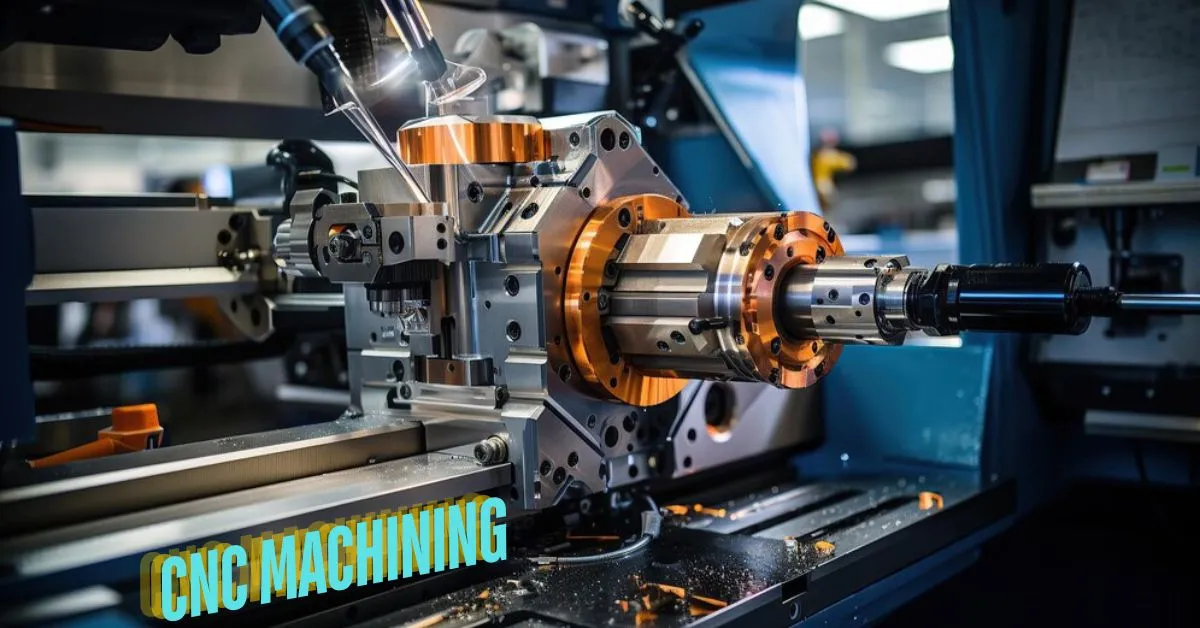Exploring the Evolution of CNC Machining Precision Efficiency and Future Trends
Computer Numerical Control CNC Machining stands as a cornerstone of modern manufacturing, revolutionizing how complex parts and components are produced with precision, efficiency, and versatility. This technology relies on automated systems driven by computer programs to execute precise machining operations. From aerospace components to intricate medical devices, CNC machining has become indispensable across various industries for its ability to meet stringent quality standards and design specifications.
Advancements in CNC Machining
- Automation and Robotics Integration
One of the most impactful advancements in CNC machining is the seamless integration of automation and robotics. Automated CNC systems minimize errors that can arise from human intervention, significantly boosting productivity and operational efficiency. Robots now play critical roles in the manufacturing process by handling tasks such as loading and unloading materials, changing tools, and performing intricate secondary operations like deburring and inspection. This integration not only streamlines production workflows but also enables continuous operation, thereby optimizing output and reducing overall production costs.
Multi-Axis Machining
While traditional CNC machines operated along three axes (X, Y, and Z), recent innovations have introduced multi-axis machining capabilities, including 5-axis and 7-axis systems. These advanced machines can manipulate the workpiece from multiple angles and orientations, allowing for the creation of highly complex geometries and reducing the need for multiple setups. Industries such as aerospace, automotive, and medical devices benefit immensely from multi-axis machining, as it facilitates the production of intricate components with unparalleled precision and efficiency.
Enhanced Software and Simulation Tools
The evolution of CNC software and simulation tools has been pivotal in enhancing manufacturing capabilities. Modern Computer-Aided Manufacturing (CAM) software features intuitive interfaces and robust simulation functionalities that enable manufacturers to visualize and optimize machining processes before actual production begins. This predictive capability not only reduces the risk of errors and waste but also enhances overall production efficiency and accelerates time-to-market for new products. Manufacturers can now simulate various machining scenarios, analyze tool paths, and predict potential issues, ensuring smoother and more reliable production cycles.
Additive Manufacturing Integration
The convergence of CNC machining with additive manufacturing (AM) has opened new frontiers in part production. Hybrid machines that combine subtractive (CNC) and additive (3D printing) processes allow manufacturers to leverage the strengths of both methods. Additive manufacturing enables the creation of complex geometries and internal features that are difficult or impossible to achieve with traditional machining alone. This integration not only enhances design flexibility but also reduces material waste and shortens lead times, making it particularly advantageous for prototyping and low-volume production in industries such as aerospace, automotive, and medical devices.
Smart Machining and Industry 4.0
Industry 4.0 technologies have brought about the era of smart machining in CNC operations. CNC machines equipped with sensors and Internet of Things (IoT) connectivity can now collect and transmit real-time data throughout the manufacturing process. This data driven approach enables predictive maintenance strategies where machine performance is continuously monitored, and potential issues are identified and addressed proactively before they can cause downtime. Smart machining not only optimizes machine uptime and operational efficiency but also facilitates better resource allocation and process optimization, ultimately driving cost savings and enhancing competitiveness.
Advanced Materials and Tooling
Advancements in materials science and cutting-edge tooling technologies have expanded the capabilities of CNC machining to handle a wider range of materials and applications. Materials such as carbon fiber composites, titanium alloys, and high-temperature superalloys, once considered challenging to machine, are now more accessible thanks to improved cutting tools and machining techniques. These advanced materials offer superior strength, durability, and performance characteristics, making them ideal for demanding applications in aerospace, automotive, and medical industries where reliability and precision are paramount.
Precision and Micro-Machining
The demand for precision and micro-machining capabilities continues to grow across industries such as electronics, medical devices, and watchmaking. CNC machines equipped with high-precision components and advanced control systems can achieve tolerances measured in micrometers, ensuring accuracy and consistency in the production of small, intricate components. This capability is crucial for applications where miniature size, intricate shapes, and fine details are essential, underscoring CNC machining’s role in enabling innovation and advancement in these high-tech sectors.
Eco-Friendly Machining Practices
In response to global sustainability challenges, CNC machining has embraced eco-friendly practices aimed at reducing environmental impact and improving operational efficiency. Manufacturers are increasingly adopting biodegradable lubricants, recycling metal shavings and scraps, and investing in energy-efficient machining technologies. These practices not only minimize the carbon footprint of manufacturing operations but also contribute to cost savings through reduced waste disposal and energy consumption. By integrating sustainable practices into CNC machining processes, manufacturers can uphold environmental stewardship while meeting regulatory requirements and enhancing their reputation as responsible corporate citizens.
Conclusion
As CNC machining continues to evolve with technological advancements and industry demands, its role in modern manufacturing remains pivotal. From enhancing precision and efficiency to enabling innovative design capabilities, CNC machining continues to drive progress across diverse industries. By embracing these advancements in automation, software integration, materials science, and sustainability, manufacturers can stay at the forefront of innovation, delivering high-quality products that meet the evolving needs of global markets.






